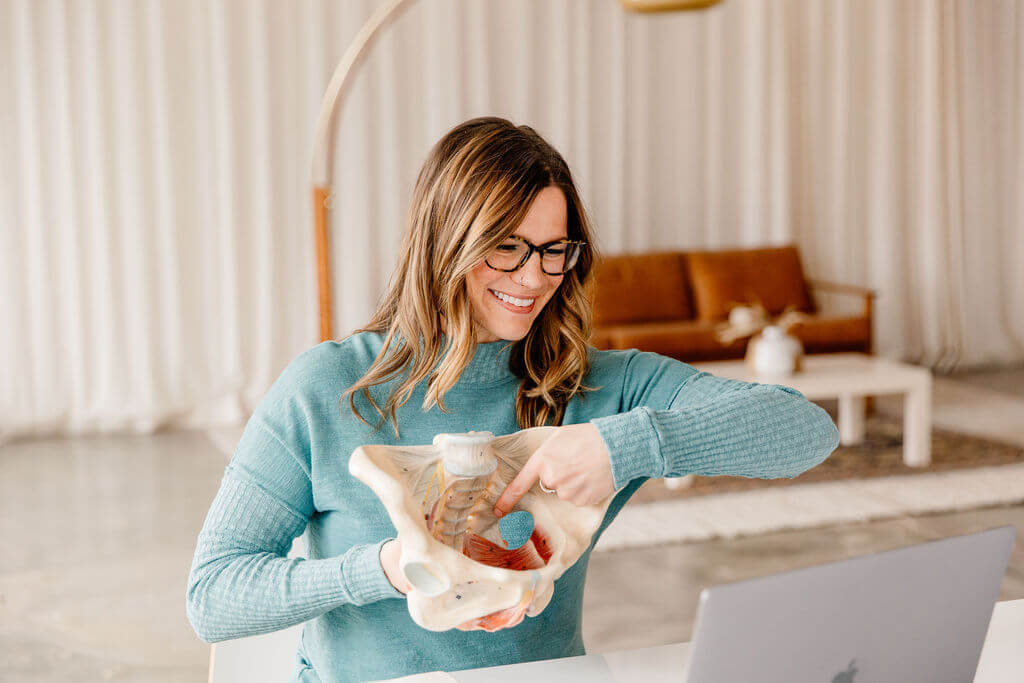
3 Troubling Male Pelvic Floor Struggles + How To Treat Them
It’s a common misconception that pelvic floor health only pertains to people who were assigned female at birth*.
Those assigned female at birth are regularly urged to do Kegel exercises and other pelvic floor exercises to ensure their pelvic floor is as healthy as possible.
Unfortunately, those assigned male at birth** (including Trans women and nonbinary folx) are often left out of this conversation. And to be frank, this is not okay.
Maintaining optimal health is just as important for the male pelvic floor as it is for the female pelvic floor. And I’m here to change the narrative that only women should be concerned about their pelvic floor.
In this blog, we’re breaking down the male pelvic floor, common pelvic floor struggles experienced by men, and how a pelvic floor therapist (like me) can be helpful. Let’s dive right in.
NOTE:
*For the purposes of this blog, we will refer to those assigned female at birth as females or women
**For the purposes of this blog, we will refer to those assigned male at birth as males or men.
Understanding the Male Pelvic Floor
Let’s begin by addressing a common question that’s often typed in Google: yes, men do have pelvic floors. No matter your sex or gender identity, every person is born with a pelvic floor.
While there are several key differences between pelvic floor structure in males versus females, that doesn’t mean it’s not important to understand and take care of the male pelvic floor.
Like females, the male pelvic floor stretches from the pubic bone at the front of the body to the tailbone at the back of the body. The pelvic floor supports the bladder (where pee is held until released) and bowels (the organ responsible for digestion).
The pelvic floor also gives structure to the spine and hips and aids in sexual appreciation. The male pelvic floor is also responsible for supporting the prostate and finally, the pelvic floor is home to the urethra and the anus.
Males have what’s called a bulbospongiosus muscle. This muscle encircles the penis, helps with semen release, and connects to the perineum – which protects all the pelvic floor muscles and blood vessels.
In addition to the bulbospongiosus, you’ll also find the ischiocavernosus muscle in the male pelvic floor. Together, these two muscles play an integral role in stabilizing the penis and maintaining erections.
Common Pelvic Floor Struggles for Men
One of the most common pelvic floor diagnoses for men is prostatitis. Prostatitis is when the prostate gland becomes swollen or inflamed; which causes pelvic, lower back, and groin pain, as well as pain with urination, ejaculation, bowel movements, or sitting.
The prostate gland is responsible for creating the fluid that is mixed with sperm cells to make ejaculate fluid, as well as helping expel this fluid out during ejaculation.
Here are some other common conditions of the male pelvic floor:
- Erectile dysfunction – the inability to maintain an erection.
- Male urinary dysfunction – when the bladder doesn’t work properly or an enlarged prostate blocks urine flow.
- Peyronie’s Disease – a benign condition in which the penis experiences repeated injury, either through vigorous sex or often sports accidents.

How a Pelvic Floor Physical Therapist Can Benefit Men with Pelvic Floor Concerns
The good news is that all of the conditions mentioned here are treatable through physical therapy. If you’re a male who is experiencing any of the following symptoms, it’s time to consult with a doctor to identify your specific concern.
- Persistent constipation
- Incontinence
- Pelvic pain
- Frequent or painful urination
- Lower back pain
- Trouble maintaining an erection
- Testicular pain
- Pain during ejaculation
- Penile pain
These symptoms do not automatically mean you’ll be diagnosed with erectile dysfunction, urinary dysfunction, or Peyronie’s Disease.
Your pelvic floor physical therapist will first examine your medical history and discuss your symptoms with you. They will decide the best course of treatment for your individual needs and will work to help recondition the pelvic floor muscles in order to improve the strength, flexibility, and function of the muscles.
Want to consult with Dr. Laura Meihofer and get started on your pelvic floor health journey?
Book a FREE 20-minute discovery call HERE.
P.S. If you’re interested in learning more about the pelvic floor and what pelvic floor physical therapists do, follow my Instagram!
More content you may like:
Some of the links on this page may be affiliate links. Laura Meihofer’s LLC is a participant in the Amazon Associates Program and others, as an affiliate advertising program designed to provide a means for sites to earn advertising fees by linking to products Laura organically uses and trusts. If you purchase a product through an affiliate link, your cost will be the same, but Laura will automatically receive a small commission. Your support is greatly appreciated and helps her spread her message!








Sorry, the comment form is closed at this time.